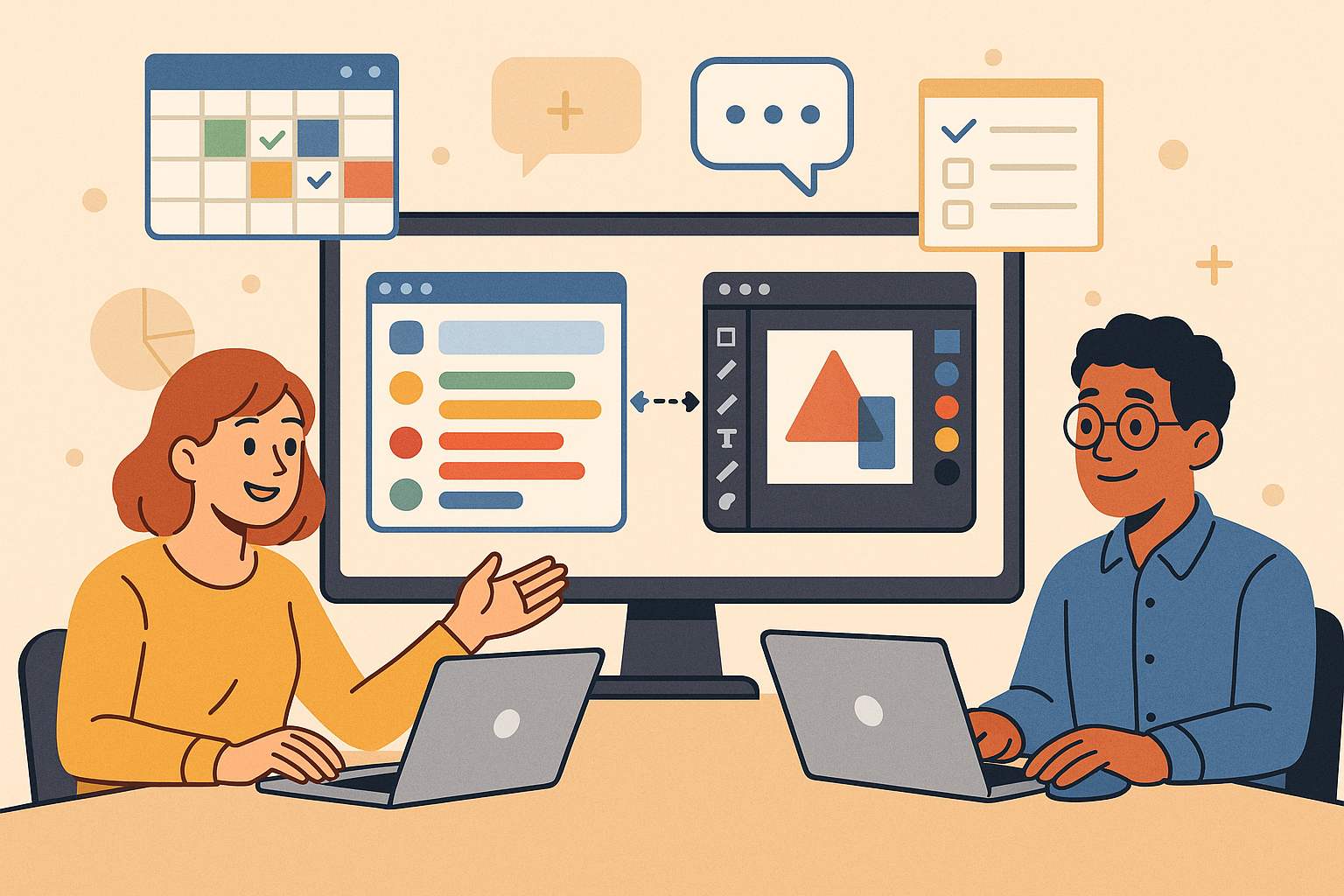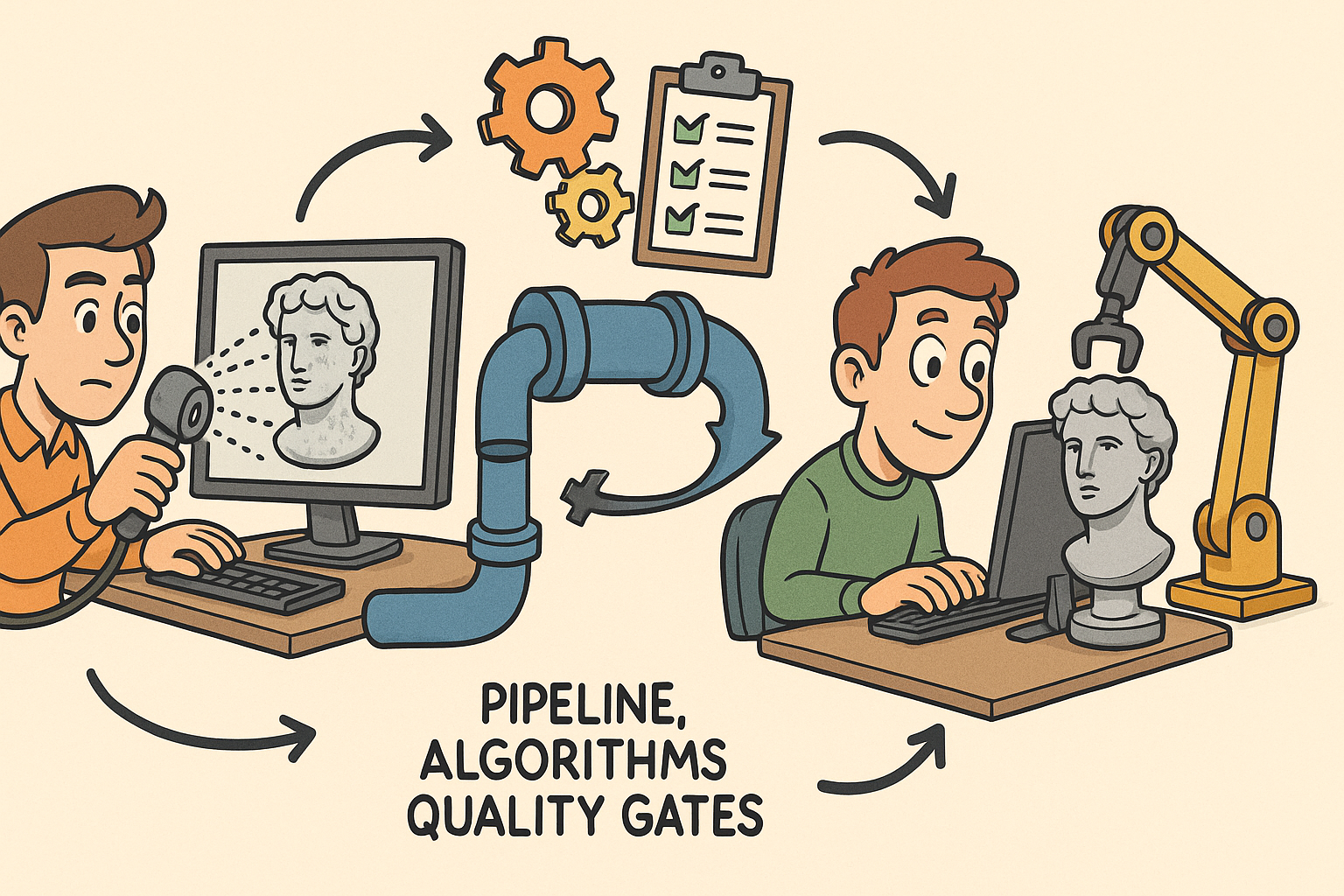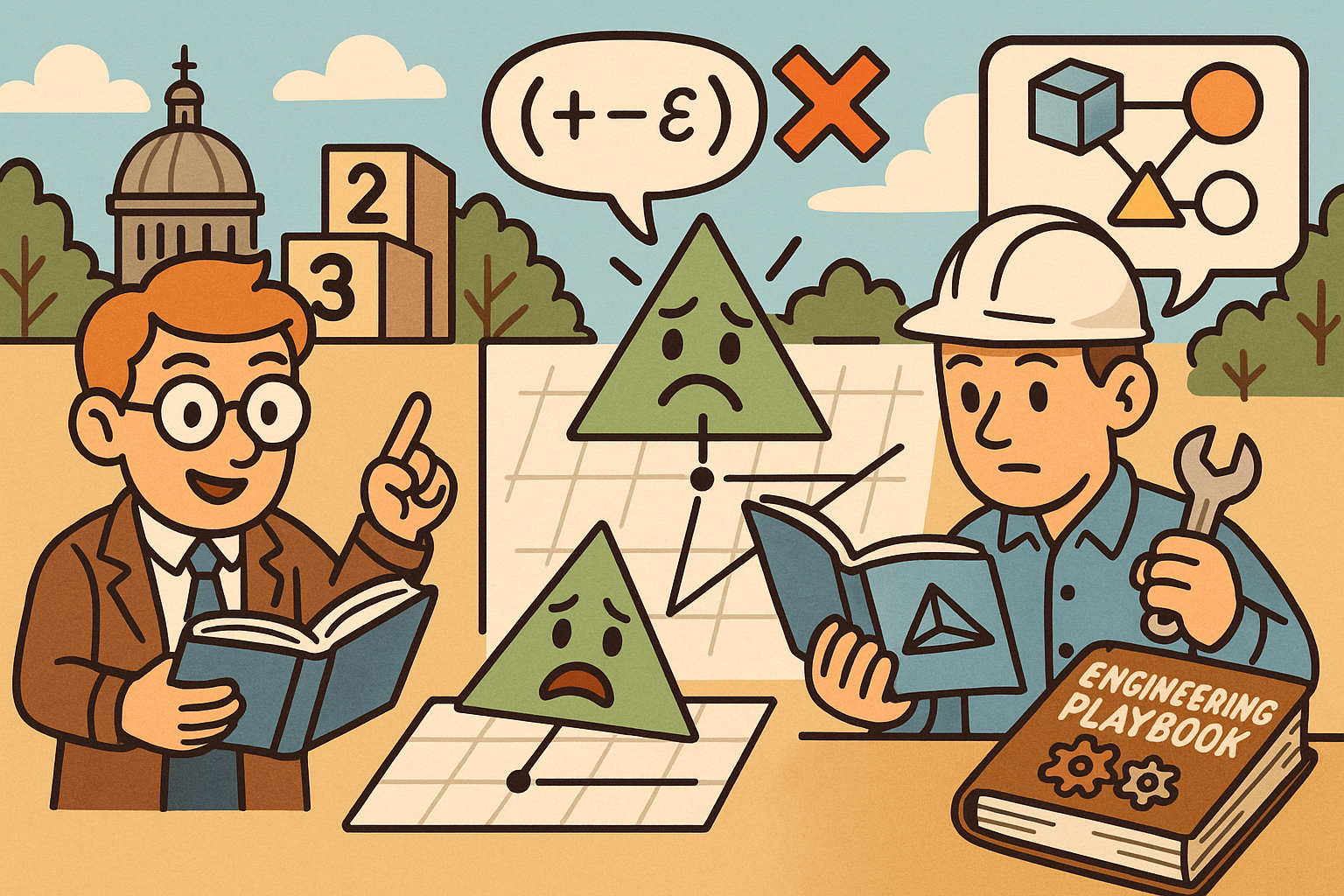Your Cart is Empty
Customer Testimonials
-
"Great customer service. The folks at Novedge were super helpful in navigating a somewhat complicated order including software upgrades and serial numbers in various stages of inactivity. They were friendly and helpful throughout the process.."
Ruben Ruckmark
"Quick & very helpful. We have been using Novedge for years and are very happy with their quick service when we need to make a purchase and excellent support resolving any issues."
Will Woodson
"Scott is the best. He reminds me about subscriptions dates, guides me in the correct direction for updates. He always responds promptly to me. He is literally the reason I continue to work with Novedge and will do so in the future."
Edward Mchugh
"Calvin Lok is “the man”. After my purchase of Sketchup 2021, he called me and provided step-by-step instructions to ease me through difficulties I was having with the setup of my new software."
Mike Borzage
Integrating Project Management Tools with Design Software for Enhanced Collaboration and Efficiency
July 22, 2025 8 min read


Context and Rationale
Role of Project Management Tools and Evolving Collaboration Needs
In today’s dynamic design ecosystems, the project management tools have emerged as an integral part of the overall workflow structure, enabling teams to coordinate complex design projects with ease and precision. These tools are not just about scheduling tasks or tracking deadlines; they provide a central platform that bridges the gap between creative ideation and structured execution. In modern design environments, where teams are distributed geographically and interdisciplinary collaboration is the norm, the importance of a centralized project management module cannot be overstated. The integration of such tools within design software fundamentally transforms the way designers, engineers, and architects communicate. It enhances not only task allocation and resource management but also fosters a culture of shared responsibility and accountability.
The evolution of design software has necessitated a paradigm shift where collaboration is embedded within the creative process itself. For example, design teams can collaboratively annotate and review 3D models, track iterative changes in real time, and synchronize tasks with other departments such as marketing and manufacturing. This integrated approach supports the innovative potential of designers while simultaneously offering the precision required for large-scale projects. Additionally, key facets including real-time updates, automated workflow adjustments, and proactive issue tracking help maintain project transparency and accountability, which is essential for seamless operations. The integration of robust project management functionalities within design applications demonstrates how creative output and operational oversight are interdependent, ensuring that the final product is both innovative and delivered within budget and on schedule.
Motivations and the Interplay Between Creative Processes and Structured Oversight
The motivations for integrating project management modules with design applications are both strategic and operational in nature. Organizations are increasingly recognizing that while creative design processes thrive in an environment that supports freedom and experimentation, efficient output demands structured project oversight. Designers benefit from enhanced creative latitude when they can work on advanced product visualization and iterative prototyping, yet the overarching project goals require coordinated efforts managed through reliable tracking systems. The synthesis of these seemingly divergent approaches is achieved through the well-designed integration of project management tools, leading to improved workflow governance.
One prominent motivation is the need for visibility and control over multiple concurrent projects. With features such as real-time project tracking, version control, and comprehensive task management, these integrated systems empower teams to maintain a cohesive vision while managing intricate details. Moreover, the incorporation of automated notifications and deadline alerts ensures that every stakeholder is aligned with the project’s timeline and deliverables. The interplay between creative freedom and strict oversight fosters an operational environment where innovative ideas are effectively channeled toward tangible outcomes. This results in enhanced productivity because it minimizes miscommunication and avoids project delays. Furthermore, the use of integrated tools promotes a culture of continuous improvement through metrics and analytics, enabling teams to identify bottlenecks and optimize their creative strategies over time.
Benefits and Challenges of Integration
Benefits of Integration: Enhancing Collaboration and Streamlining Workflows
Integrating project management tools with design software offers a wide range of tangible benefits that resonate across all stages of the design process. A primary advantage is the significant improvement in team collaboration and communication; by consolidating all project-related information in a single platform, teams can share updates instantly and remain aligned regardless of their physical locations. The use of integrated workflow management systems allows for real-time project tracking that ensures every member of the team is aware of the current progress, upcoming deadlines, and potential bottlenecks in the project lifecycle.
Some of the key benefits include:
- Enhanced team collaboration: Instant sharing of design iterations and feedback loops fosters an environment of creative synergy.
- Streamlined workflows: Automated task updates and centralized communication lead to reduced manual overhead and better time management.
- Real-time project tracking: Visibility into the project’s life cycle facilitates prompt adjustments and resource reallocation.
Challenges in Integration: Overcoming Data Synchronization and Training Barriers
Despite its many advantages, the integration of project management modules with design software is not without challenges. One of the primary hurdles is data synchronization and compatibility between disparate platforms. In many cases, critical files, design iterations, and versioning data must be seamlessly shared across various software environments, which can be a highly technical undertaking. The complexities of achieving real-time synchronization across systems that may have different update cycles or data formats often lead to unforeseen integration issues. Moreover, the introduction of these integrated systems requires a strategic rethinking of workflows alongside comprehensive training programs for design teams.
Additional challenges include:
- Data compatibility issues: Ensuring consistent data integrity between design software and project management tools necessitates robust integration middleware and well-defined protocols.
- Training requirements: Teams must often undergo extensive training to adapt to the new integrated workflows and to take full advantage of the functionalities provided.
- Balancing creative flexibility with structure: Integrating rigid project management processes into the fluid realm of creative design can sometimes lead to tensions between workflow standardization and individual creative expression.
Implementation Strategies and Best Practices
Strategies for Seamless Integration: Tool Selection and API Connectivity
The successful integration of project management tools with design software necessitates a well-crafted strategy that begins with the careful evaluation and selection of complementary tools. Organizations must consider both the inherent capabilities of the design applications they use and the specialized features offered by various project management platforms. The goal is to achieve a harmonious balance where each component not only performs optimally on its own but also communicates effortlessly with others via robust APIs and modular plug-ins. For instance, the integration process might involve mapping out existing workflows, determining critical touchpoints, and then selecting tools that excel in real-time communication, task tracking, and version control.
Key tactics include:
- Tool evaluation: Assessing the compatibility of project management software with current design platforms.
- API utilization: Leveraging robust APIs to bridge any functionality gaps and ensuring seamless data exchange.
- Modular plug-ins: Implementing plug-ins that add specialized integration features without disrupting the core software functionalities.
Best Practices for Customization, Feedback, and Data Security
Customization and continuous feedback are at the heart of best practices when integrating project management and design software. A tailored approach that meets the specific needs of interdisciplinary teams ensures that every facet of the design process is accounted for—from early brainstorming sessions and concept development to the final iterations of prototype testing. The design team benefits greatly from a system that is flexible enough to accommodate custom workflows, reporting features, and role-based access controls. Regular feedback loops established through iterative testing and user engagement sessions are crucial for identifying bottlenecks and pinpointing areas for improvement.
To achieve a robust integration, key best practices include:
- Customization: Tailor the integrated solution to the unique workflows and requirements of the design team.
- Feedback loops: Implement regular review sessions to ensure the system evolves as user needs change and new functionalities are required.
- Data security and version control: Establish rigorous security protocols alongside efficient version management to maintain the integrity and confidentiality of design data.
Conclusion
Recap of Strategic Importance and Enhanced Productivity
The integration of project management tools with advanced design software stands as a transformative force that directly impacts both the creative and operational aspects of design projects. By merging structured oversight with the inherently imaginative nature of creative design, organizations are able to foster environments that both stimulate innovation and ensure efficient project delivery. The strategic importance of this integration is underscored by improved team collaboration, streamlined workflows, and a more effective allocation of resources and timelines. When these integrated tools are deployed effectively, they enable teams to seamlessly track the progress of their projects, share critical updates, and adapt to unforeseen challenges with agility.
Some of the most significant impacts include:
- Enhanced productivity: With real-time tracking and centralized communication, projects are executed faster.
- Boosted creativity: A controlled environment that supports iterative feedback empowers creative teams to push boundaries.
- Efficient project delivery: Precise resource management ensures that projects remain on time and within budget while maintaining high creative standards.
Future Trends and Final Thoughts
Looking ahead, the potential for further advancements in the integration of project management and design software promises an even more dynamic and responsive creative environment. There is a growing anticipation for the emergence of AI-driven project insights and advanced automation features that will further refine integrated design workflows. These future trends are expected to offer predictive analytics that can forecast project bottlenecks, suggest optimal workflows, and drive process improvements in real time. The continual evolution of API connectivity and modular plug-in structures will enable even smoother integration across multiple platforms, allowing for an unprecedented level of customization and flexibility in managing multifaceted projects.
Key future trends to watch include:
- AI-driven insights: The infusion of artificial intelligence into project management tools will help teams anticipate risks and optimize their workflows proactively.
- Advanced automation: More sophisticated automation processes promise to eliminate manual errors and accelerate project milestones.
- Enhanced connectivity: Improved API frameworks and plug-in ecosystems will ensure that future integrations are more robust, adaptable, and secure.
Also in Design News

From Raw Scans to Manufacture-Ready Geometry: Pipeline, Algorithms, and Quality Gates
December 08, 2025 13 min read
Read More
Design Software History: Numerical Robustness in Geometry Kernels: History, Failure Modes, and Engineering Playbook
December 08, 2025 13 min read
Read More
Cinema 4D Tip: Reusable Cinema 4D Camera Rig Presets for Faster Shot Setup
December 08, 2025 2 min read
Read MoreSubscribe
Sign up to get the latest on sales, new releases and more …


